Minister to France and future President Thomas Jefferson began to express interest in an expedition to the Pacific Northwest, as early as the 1780s.
As President, Jefferson asked Congress to fund an expedition to the Pacific, two years into his first term. He understood that the fledgling United States would have a better claim to the Pacific Northwest if the team gathered data on plants and animals, but Jefferson’s primary interest in the mission, was trade.
Today we take coast-to-coast travel for granted, it seems odd to think how strange and unknown were the more remote parts of our own country. Though extraordinarily well read and one of the brightest men of his generation, (Jefferson once cut out 901 bible verses from which he assembled his own “Jefferson Bible”, translating the volume into Greek, Latin, French and back to English, “just for fun”), President Jefferson legitimately believed that herds of Wooly Mammoth roamed the western reaches of the nation. 
Jefferson wanted to find an all-water route to the Pacific for the conduct of business. The President commissioned the Corps of Discovery expedition in 1803, naming Army Captain Meriwether Lewis expedition leader.
The two men had known one another since Lewis was a boy, having long since developed a relationship of mentor and protégé. At this time Lewis was working as personal secretary to the President. Tough, intellectually gifted and resourceful, Lewis received a crash course in the natural sciences from the President himself, before being sent off to Philadelphia to brush up on medicine, botany and celestial navigation.
Lewis selected William Clark as his second in command, due to the man’s exceptional skills as a frontiersman. It would prove to be an excellent choice.
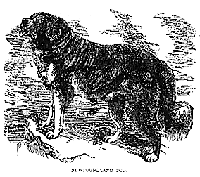 Most of 1803 was spent in planning and preparation, Lewis and Clark joining forces near Louisville that October. After wintering in the Indiana territory base camp in modern day Illinois, the 33-man expedition departed on May 14, 1804, accompanied by “Seaman”, a “Dogg of the Newfoundland breed”.
Most of 1803 was spent in planning and preparation, Lewis and Clark joining forces near Louisville that October. After wintering in the Indiana territory base camp in modern day Illinois, the 33-man expedition departed on May 14, 1804, accompanied by “Seaman”, a “Dogg of the Newfoundland breed”.
Lewis and Clark set out to explore the Louisiana Territory, as it became an official part of the United States. Borders were still hazy at the time, and Spanish authorities suspected that the expedition would encroach on their territory in the southwest. They had good reason to think so, Thomas Jefferson believed the same.
Corps of Discovery members couldn’t know that General James Wilkinson, one of the most duplicitous, avaricious, and corrupt individuals of the age, was reporting their every move to his paymaster, the Spanish King Charles IV.
Over the course of the expedition, the tiny group was hunted by no fewer than four Spanish expeditions with as many as 600 soldiers, mercenaries and Comanche guides, each intending to make the Corps of Discovery vanish without a trace.
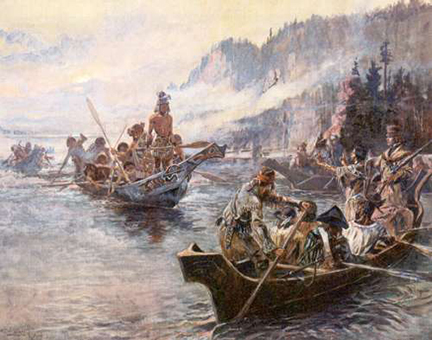 Discovery established friendly relations with at least 24 indigenous tribes, without whose help they may have become lost or starved in the wilderness. Most were more than impressed with Lewis’ state-of-the-art pneumatic rifle, which could silently fire up to 20 rounds after being pumped full of compressed air.
Discovery established friendly relations with at least 24 indigenous tribes, without whose help they may have become lost or starved in the wilderness. Most were more than impressed with Lewis’ state-of-the-art pneumatic rifle, which could silently fire up to 20 rounds after being pumped full of compressed air.
Not all Indian tribes were friendly, there were several run-ins with a group the Americans called “Teton-wan Sioux”. The Sioux were no joke. On one occasion, a group of four who had separated from the main expedition fled 100 miles in a single day from these people, before they felt it was safe to stop.
Lewis and Clark’s memoirs describe similar encounters with a large and especially ferocious species of bear, the Grizzly, an animal which more than once had expedition members climbing trees with a notable sense of urgency.
It was at the winter camp of 1804-5 that they met a French fur trapper named Toussaint Charbonneau and his young wife (or slave – she might have been a little of both), Sacagawea. They seemed to have thought Charbonneau a shady character, but they liked the young Indian girl, and her linguistic skills would prove useful. Sacagawea spoke Shoshone and Hidatsa while Charbonneau spoke Hidatsa and French. More than once Lewis and Clark found themselves negotiating for their lives with hostile Indians, as Discovery Corps member Francois Labiche translated English to French, Charbonneau French to Hidatsa, and Sacagawea speaking to the other side in Shoshone.
It was at this camp that Sacagawea gave birth to a son, whom she and Charbonneau named Jean Baptiste. The family stayed with the expedition, proving to be incredibly valuable to the group. They met many Indian bands along the way, whom Sacagawea’s presence quickly put at ease. War bands never traveled with women, especially not with one carrying an infant. One such band was a group of Shoshone led by Chief Cameahwait, who turned out to be none other than Sacagawea’s own brother. It must have been quite a reunion, they hadn’t seen one another since her kidnap by the Hidatsa, back in 1800.
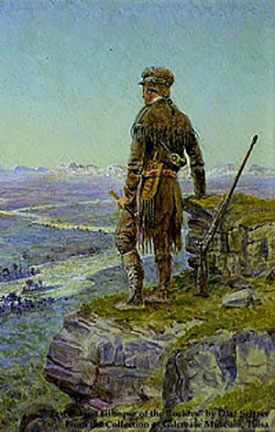 The Corps of Discovery reached the Pacific Ocean in November 1805, and set out their second winter camp in modern-day Oregon.
The Corps of Discovery reached the Pacific Ocean in November 1805, and set out their second winter camp in modern-day Oregon.
They returned through a cut in the Rocky Mountains which Sacagawea remembered from her childhood, the modern day Bozeman Pass, arriving at the Hidatsa-Mandan villages on August 14, 1806. For Sacagawea, Charbonneau and Jean Baptiste, this was the end of the trip.
Lewis and Clark arrived in St. Louis on September 23, 1806, the Corps of Discovery having met their objectives. They had reached the western coast and returned, though they did not find a continuous water route to the Pacific. The expedition created maps along the way, establishing legal claim to the land, while describing 178 previously unknown plants and 122 unknown animals, and establishing diplomatic and trade relations with at least two dozen indigenous nations.
Despite being heavily armed, most members were required to defend themselves only once, that in a running gun battle with a band of Blackfeet, on the way home.
The expedition suffered only one fatality when Sergeant Charles Floyd succumbed to what appears to have been appendicitis. Though not seriously wounded, a humiliated Lewis had to spend several weeks face-down in a canoe, when one of the enlisted guys mistook his rump for that of an elk, and shot it.
Meriwether Lewis died from gunshot wounds to the chest and head on October 11, 1809. Historians differ as to whether it was murder or suicide, though most believe his death to have been the latter. It would not have been his first such attempt.

Sacagawea gave birth to a daughter named Lizette on December 22, 1812, and died a few months later at the age of 25. Eight months later, William Clark legally adopted her two children. Clark is recorded as having brought the boy up and educating him in St. Louis, before sending him to Europe with a German prince at the age of 18. I was unable to determine with any certainty, whether Lizette survived infancy.
Among the two-dozen plus officers and enlisted men on Discovery was William Clark’s African slave “York”, who accompanied the expedition from beginning to end. Though not an official member of the Corps of Discovery, York’s hunting skills made him a valuable member of the expedition. Indigenous tribes were fascinated by the first black man any of them had ever seen. The Arikara people of North Dakota believed him to hold spiritual powers, calling the tall man “Big Medicine”.
Though a slave, York seems to have earned a degree of respect from expedition members. At least two geographic features were named after the man. Both York and Sacagawea had a vote on the placement of the 1805-’06 winter camp, prompting historian Stephen E. Ambrose to speculate that this may have been the first time in American history, that a black man and a woman were given the vote.
Accounts differ as to what became of him. Some say Clark freed the man, others say that York was unwilling to return to a life of slavery, following 2½ years of liberty. A black man who claimed to have been he was discovered ten or twelve years later, a tribal elder living with his four wives among the Crow, in north-central Wyoming.
Thomas Berger, author of the fictional Dances with Wolves, writes about a particularly dark skinned strain among the Indians, which many believe to have descended from York.
What became of Seaman the dog is unknown. Having accompanied the Lewis & Clark expedition from the very beginning, the last journal reference to him was written in July, two months before the journey’s end.

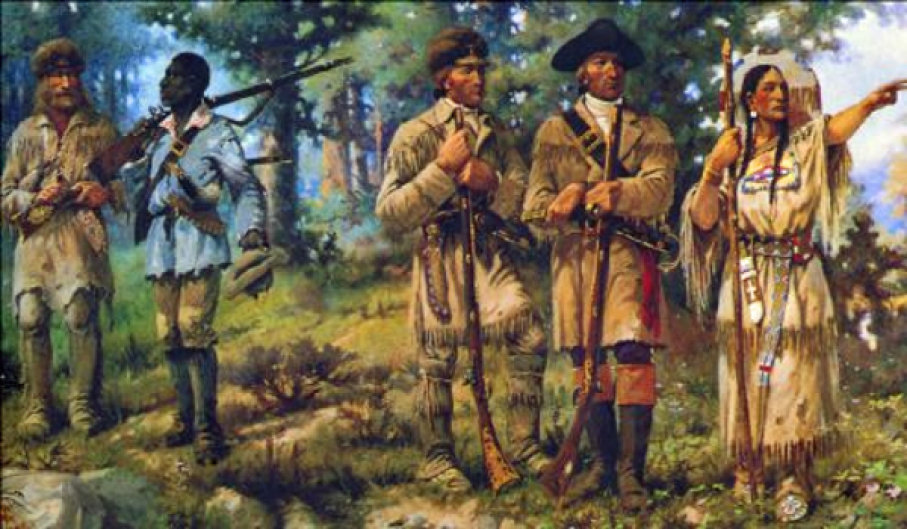

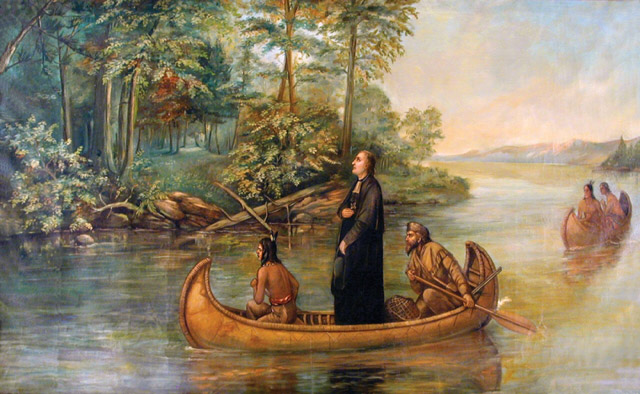
 On May 17, 1673, Father Jacques Marquette set out with the 27-year old fur trader Louis Joliet to explore the upper reaches of the Mississippi River. Their voyage established the possibility of water travel from Lake Huron to the Gulf of Mexico, helping to initiate the first white settlements in the North American interior and bestowing French names on cities from La Crosse to New Orleans.
On May 17, 1673, Father Jacques Marquette set out with the 27-year old fur trader Louis Joliet to explore the upper reaches of the Mississippi River. Their voyage established the possibility of water travel from Lake Huron to the Gulf of Mexico, helping to initiate the first white settlements in the North American interior and bestowing French names on cities from La Crosse to New Orleans.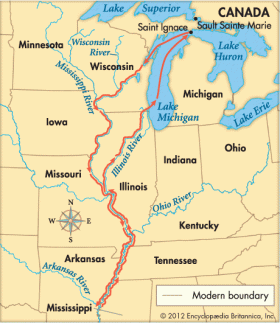

 Much has been written of the conflict between Natives and American settlers, but that story has little to compare with the level of distrust and mutual butchery which took place between Mexico and the Apache.
Much has been written of the conflict between Natives and American settlers, but that story has little to compare with the level of distrust and mutual butchery which took place between Mexico and the Apache.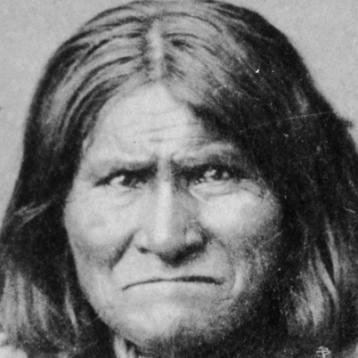


 In his 1909 memoirs, Geronimo wrote of the 1904 St. Louis World’s Fair: “I am glad I went to the Fair. I saw many interesting things and learned much of the white people. They are a very kind and peaceful people. During all the time I was at the Fair no one tried to harm me in any way. Had this been among the Mexicans I am sure I should have been compelled to defend myself often”.
In his 1909 memoirs, Geronimo wrote of the 1904 St. Louis World’s Fair: “I am glad I went to the Fair. I saw many interesting things and learned much of the white people. They are a very kind and peaceful people. During all the time I was at the Fair no one tried to harm me in any way. Had this been among the Mexicans I am sure I should have been compelled to defend myself often”.

 Native American stickball had many variations, but the object was to hit a stake or other object with a “ball”. The ball was a stone wrapped in leather, handled with one or sometimes two sticks. There could be up to several hundred contestants to a team, and the defenders could employ any means they could think of to get at the ball, including hacking, slashing or any form of physical assault they liked. Lacerations and broken bones were commonplace, and it wasn’t unheard of that stickball players died on the field. The defending team could likewise employ any method they liked to keep the opposing team off of the ball carrier, and they played the game on a field that could range from 500 yards to several miles.
Native American stickball had many variations, but the object was to hit a stake or other object with a “ball”. The ball was a stone wrapped in leather, handled with one or sometimes two sticks. There could be up to several hundred contestants to a team, and the defenders could employ any means they could think of to get at the ball, including hacking, slashing or any form of physical assault they liked. Lacerations and broken bones were commonplace, and it wasn’t unheard of that stickball players died on the field. The defending team could likewise employ any method they liked to keep the opposing team off of the ball carrier, and they played the game on a field that could range from 500 yards to several miles.

 The British Royal Proclamation of October 7, 1763, drew a line between the British colonies and Indian lands, creating a vast Indian Reserve stretching from the Appalachians to the Mississippi River and from Florida to Newfoundland. For the Indian Nations, this was the first time that a multi-tribal effort had been launched against British expansion, the first time such an effort had not ended in defeat.
The British Royal Proclamation of October 7, 1763, drew a line between the British colonies and Indian lands, creating a vast Indian Reserve stretching from the Appalachians to the Mississippi River and from Florida to Newfoundland. For the Indian Nations, this was the first time that a multi-tribal effort had been launched against British expansion, the first time such an effort had not ended in defeat.
You must be logged in to post a comment.